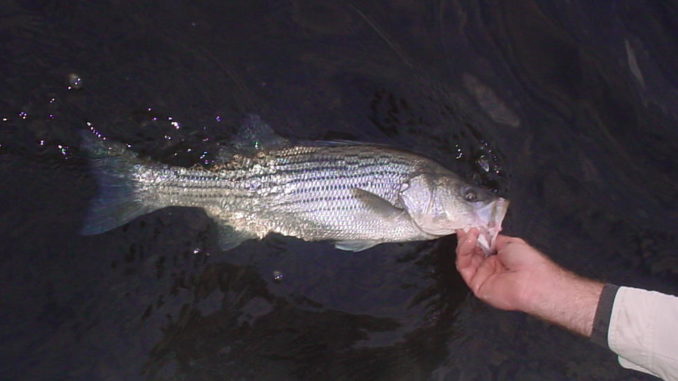
Boaters on Lake Murray may notice numbers of dead or dying striped bass in the water over the next several weeks.
This is a result of what S.C. Department of Natural Resources biologists suspect is a combination of low dissolved oxygen levels, stratified water temperatures in the area and hydro operations.
As of Sept. 4, about 1,200 striped bass, with the majority of these fish ranging from 18 to 22 inches in length, have been found from the fore bay area of the dam to just past Spence Island.
“This is a water-quality phenomenon documented in a number of reservoirs in the Southeast where striped bass are stocked,” said Hal Beard, fisheries biologist with the S.C. Department of Natural Resources (DNR) based in Columbia. “At Lake Murray, this type of fish kill generally occurs during the latter part of the summer and may vary in magnitude from year to year.”
Summer die-offs like this one have occurred regularly at Lake Murray since 1973, and a condition referred to as a “temperature-oxygen squeeze” is usually to blame. During hot weather the water in Lake Murray becomes stratified, or divided into several layers, with the upper layer being the warmest and highest in oxygen. Deeper levels are cooler but contain less dissolved oxygen.
During the early summer months, striped bass concentrate at
depths containing the best balance between cool temperatures and high levels of oxygen. As summer progresses, the upper layer becomes too warm for stripers, which generally prefer water less than 78 degrees, and the fish move to deeper and cooler waters. As the oxygen levels in the lower layers are depleted to around two parts per million, the suitable habitat for the striped bass is reduced, they become stressed and eventually die. Biologists call this condition the “temperature-oxygen squeeze.”
“The duration of the seasonal Lake Murray fish kill will depend largely on weather conditions and the period of time it takes for the lake to begin to de-stratify,” Beard said. “We will continue to monitor the situation over the next several weeks.”
Find out more about DNR at www.dnr.sc.gov.


Be the first to comment